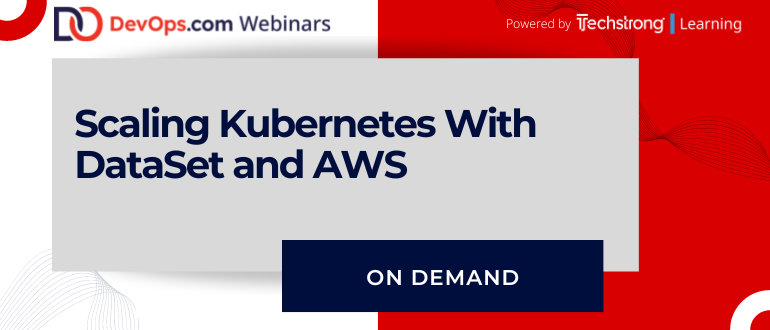Webinar
Think About Your Audience Before Choosing a Webinar Title

Sponsored by Dataset
What You’ll Learn in This Webinar
Modernizing applications by migrating to containers and Kubernetes can have many advantages – self-healing infrastructure, consistent and portable deployments, among others. However, as you roll out Kubernetes across your organization, you’ll find that while Kubernetes provides agility for development teams, it also introduces operational complexity and monitoring challenges.
Join builders from DataSet and AWS as they cover challenges with scaling Kubernetes, common Kubernetes errors and effective ways to detect, troubleshoot and prevent them.
You will learn about:
- Challenges in operating distributed cloud-native environments such as Kubernetes
- Common Kubernetes errors that DevOps and SRE teams grapple with
- Things to consider when choosing a Kubernetes platform - on Amazon Elastic Compute Cloud (EC2), serverless deployments using AWS Fargate or on-premises using Amazon EKS Distro (EKS-D)
- You'll also see a live demo that shows you how to detect and troubleshoot Kubernetes errors with DataSet
Amit Sharma is a product leader at DataSet. He has over 15 years of experience in Software Engineering and product leadership. Before joining SentinelOne, Amit led product teams at Splunk, SignalFx, AppDynamics, and Cisco.







